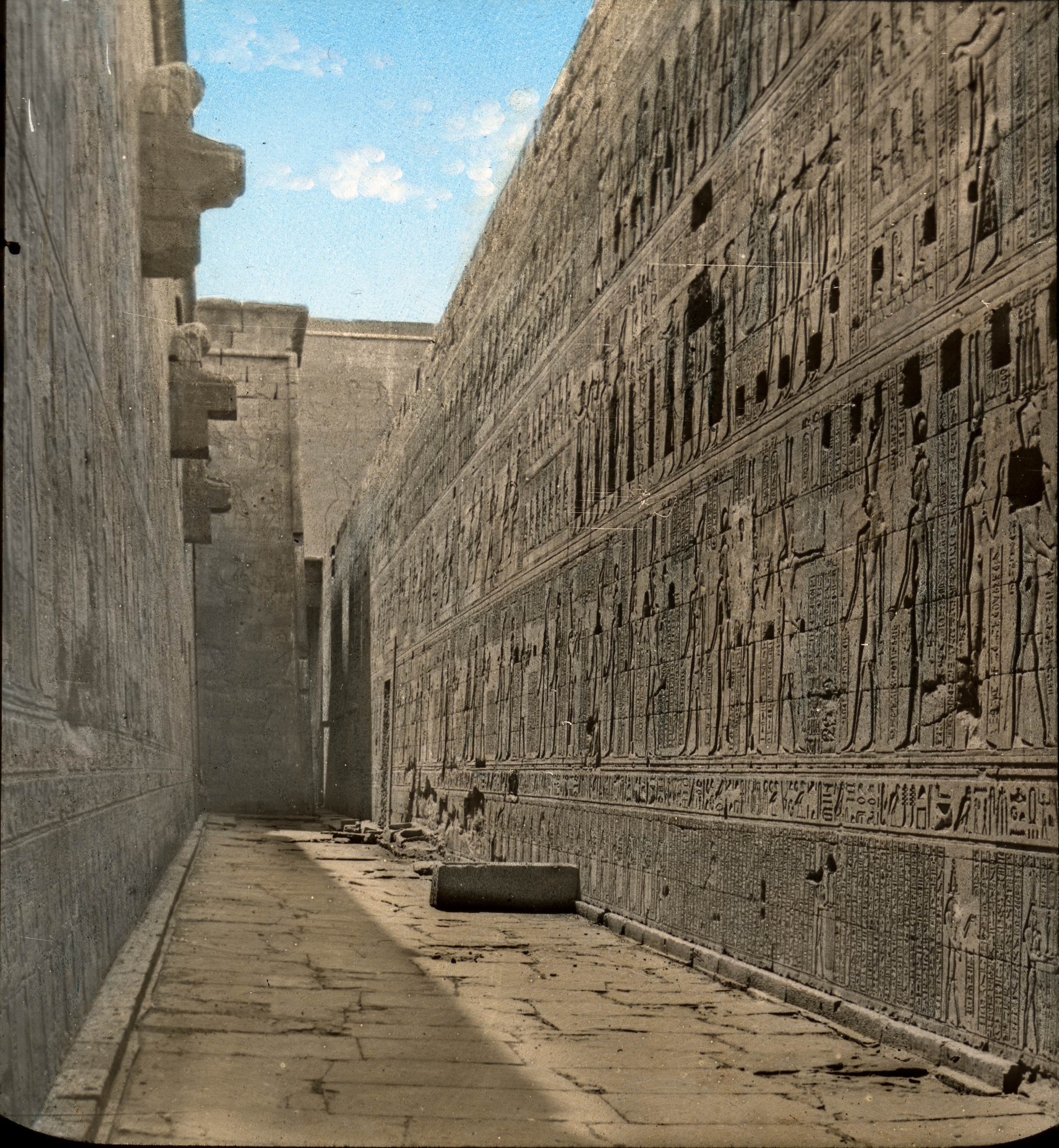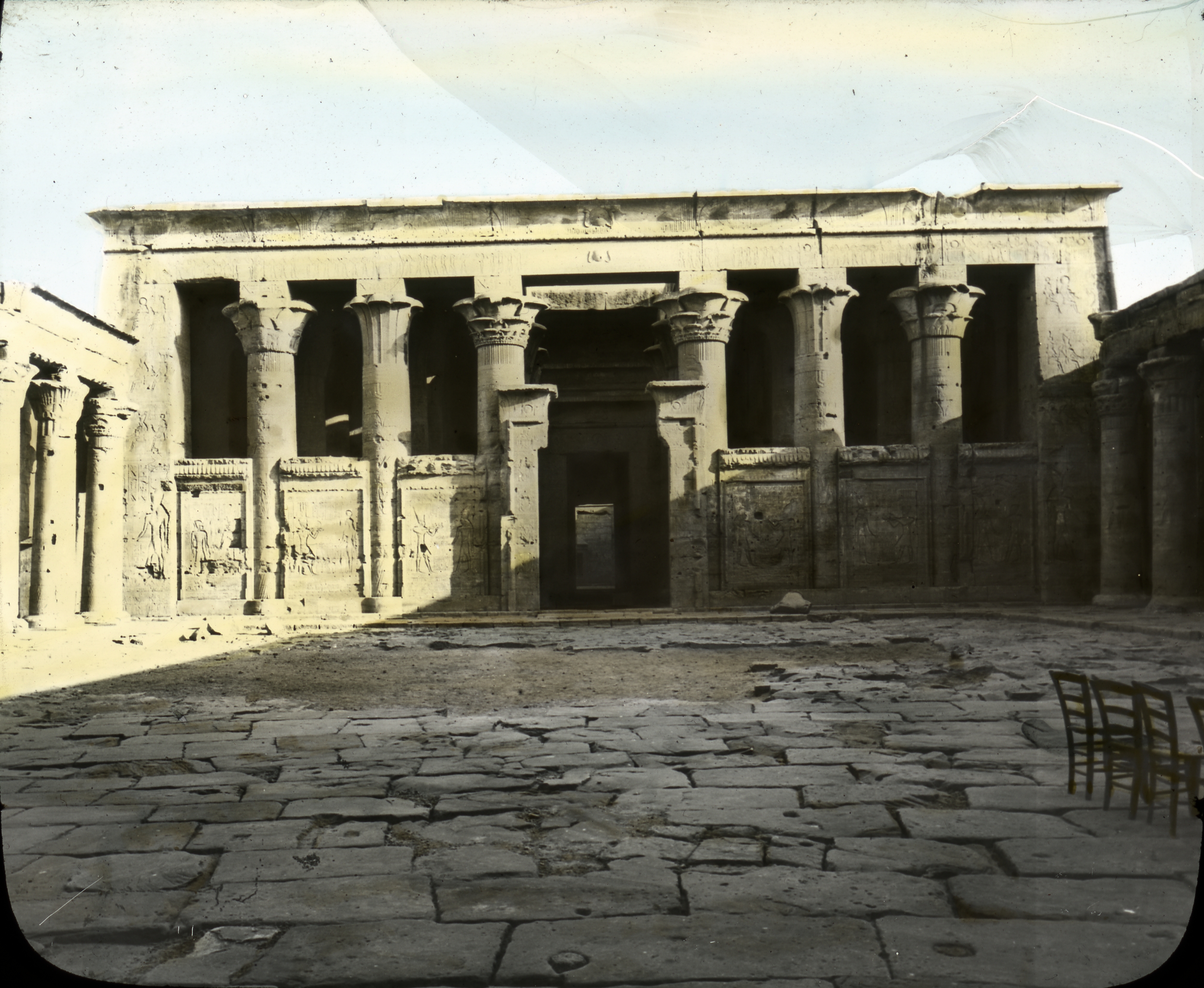|
Bone-with-meat (hieroglyph)
The ancient Egyptian Bone-with-meat hieroglyph (Gardiner F44) represented: "ancestry, inherit", and phonetic ''isw, iw' '' (inherit, etc.); a determinative for the femur, (iw'); and ''swt'', for the tibia.Kamrin, 2004. F44, p. 238. The Old Kingdom usage on slab steles, from the middle of the 3rd millennium BC, shows the proto-type form of the hieroglyph as a 'cut of meat', much like the spare ribs or beef ribs of the present era. The slab stela shows the bone as a multiple of two curved bones, much like the spare rib. An example of a wall relief scene from Edfu at the Temple of Edfu shows a cartouche with the ''joint of meat'' hieroglyph. Another less common hieroglyph pictured within the cartouche is the vertical standing ''mummy hieroglyph.'' See also * Gardiner's Sign List#F. Parts of Mammals *List of Egyptian hieroglyphs The total number of distinct Egyptian hieroglyphs increased over time from several hundred in the Middle Kingdom to several thousand during the Pt ... [...More Info...] [...Related Items...] OR: [Wikipedia] [Google] [Baidu] |
Gardiner's Sign List
Gardiner's Sign List is a list of common Egyptian hieroglyphs compiled by Sir Alan Gardiner. It is considered a standard reference in the study of ancient Egyptian hieroglyphs. Gardiner lists only the common forms of Egyptian hieroglyphs, but he includes extensive subcategories, and also both vertical and horizontal forms for many hieroglyphs. He includes size-variation forms to aid with the reading of hieroglyphs in running blocks of text. In contrast, for example, the Budge Reference has about 1,000 hieroglyphs listed in 50 pages, but with no size variations. Gardiner does not cross-index signs; once put on the list, other significant uses may be overlooked. One example of this is G16, nbtỉ, the ideogram for the Two Ladies, goddesses Wadjet as the cobra and Nekhbet as the white vulture. These are the protective and patron goddesses of the separate Egyptian kingdoms that joined into ancient Egypt, who were both then displayed on the uraeus of Wadjet when the unificat ... [...More Info...] [...Related Items...] OR: [Wikipedia] [Google] [Baidu] |
Determinative
A determinative, also known as a taxogram or semagram, is an ideogram used to mark semantic categories of words in logographic scripts which helps to disambiguate interpretation. They have no direct counterpart in spoken language, though they may derive historically from glyphs for real words, and functionally they resemble classifiers in East Asian and sign languages. For example, Egyptian hieroglyphic determinatives include symbols for divinities, people, parts of the body, animals, plants, and books/abstract ideas, which helped in reading, but none of which were pronounced. Cuneiform In cuneiform texts of Sumerian, Akkadian and Hittite languages, many nouns are preceded or followed by a Sumerian word acting as a determinative; this specifies that the associated word belongs to a particular semantic group.Edzard, 2003 These determinatives were not pronounced. In transliterations of Sumerian, the determinatives are written in superscript in lower case. Whether a given sign ... [...More Info...] [...Related Items...] OR: [Wikipedia] [Google] [Baidu] |
Femur
The femur (; ), or thigh bone, is the proximal bone of the hindlimb in tetrapod vertebrates. The head of the femur articulates with the acetabulum in the pelvic bone forming the hip joint, while the distal part of the femur articulates with the tibia (shinbone) and patella (kneecap), forming the knee joint. By most measures the two (left and right) femurs are the strongest bones of the body, and in humans, the largest and thickest. Structure The femur is the only bone in the upper leg. The two femurs converge medially toward the knees, where they articulate with the proximal ends of the tibiae. The angle of convergence of the femora is a major factor in determining the femoral-tibial angle. Human females have thicker pelvic bones, causing their femora to converge more than in males. In the condition ''genu valgum'' (knock knee) the femurs converge so much that the knees touch one another. The opposite extreme is ''genu varum'' (bow-leggedness). In the general pop ... [...More Info...] [...Related Items...] OR: [Wikipedia] [Google] [Baidu] |
Tibia
The tibia (; ), also known as the shinbone or shankbone, is the larger, stronger, and anterior (frontal) of the two bones in the leg below the knee in vertebrates (the other being the fibula, behind and to the outside of the tibia); it connects the knee with the ankle. The tibia is found on the medial side of the leg next to the fibula and closer to the median plane. The tibia is connected to the fibula by the interosseous membrane of leg, forming a type of fibrous joint called a syndesmosis with very little movement. The tibia is named for the flute '' tibia''. It is the second largest bone in the human body, after the femur. The leg bones are the strongest long bones as they support the rest of the body. Structure In human anatomy, the tibia is the second largest bone next to the femur. As in other vertebrates the tibia is one of two bones in the lower leg, the other being the fibula, and is a component of the knee and ankle joints. The ossification or formation of the bo ... [...More Info...] [...Related Items...] OR: [Wikipedia] [Google] [Baidu] |
Princess Nefertiabet Before Her Meal-E 15591-IMG 9645-gradient
Princess is a regal rank and the feminine equivalent of prince (from Latin ''princeps'', meaning principal citizen). Most often, the term has been used for the consort of a prince, or for the daughter of a king or prince. Princess as a substantive title Some princesses are reigning monarchs of principalities. There have been fewer instances of reigning princesses than reigning princes, as most principalities excluded women from inheriting the throne. Examples of princesses regnant have included Constance of Antioch, princess regnant of Antioch in the 12th century. Since the President of France, an office for which women are eligible, is ''ex-officio'' a Co-Prince of Andorra, then Andorra could theoretically be jointly ruled by a princess. Princess as a courtesy title Descendants of monarchs For many centuries, the title "princess" was not regularly used for a monarch's daughter, who, in English, might simply be called "Lady". Old English had no female equivalent of "prince ... [...More Info...] [...Related Items...] OR: [Wikipedia] [Google] [Baidu] |
Old Kingdom
In ancient Egyptian history, the Old Kingdom is the period spanning c. 2700–2200 BC. It is also known as the "Age of the Pyramids" or the "Age of the Pyramid Builders", as it encompasses the reigns of the great pyramid-builders of the Fourth Dynasty, such as King Sneferu, who perfected the art of pyramid-building, and the kings Khufu, Khafre and Menkaure, who constructed the pyramids at Giza. Egypt attained its first sustained peak of civilization during the Old Kingdom, the first of three so-called "Kingdom" periods (followed by the Middle Kingdom and New Kingdom), which mark the high points of civilization in the lower Nile Valley. The concept of an "Old Kingdom" as one of three "golden ages" was coined in 1845 by the German Egyptologist Baron von Bunsen, and its definition would evolve significantly throughout the 19th and the 20th centuries. Not only was the last king of the Early Dynastic Period related to the first two kings of the Old Kingdom, but the "cap ... [...More Info...] [...Related Items...] OR: [Wikipedia] [Google] [Baidu] |
Slab Stela
Slab or SLAB may refer to: Physical materials * Concrete slab, a flat concrete plate used in construction * Stone slab, a flat stone used in construction * Slab (casting), a length of metal * Slab (geology), that portion of a tectonic plate that is subducting ** Slab pull force, the tectonic plate force due to subduction ** Slab suction, one of the major plate tectonic driving forces ** Slab window, a gap that forms in a subducted oceanic plate ** Slab (fossil) and counter slab, the two counterparts of a fossil impression * Slab hut, a kind of dwelling made from slabs of split or sawn timber * Slab of beer, a flat package containing a large number of cans of beer Places * Slab Point, a rocky point in the South Shetland Islands, Antarctica United States * Slab, West Virginia, an unincorporated community in Ritchie County, West Virginia * Slab City, California, a locality in the Colorado Desert * Slab City, Wisconsin, an unincorporated community in Shawano County, Wisconsin ... [...More Info...] [...Related Items...] OR: [Wikipedia] [Google] [Baidu] |
Spare Ribs
Spare ribs (also side ribs or spareribs) are a variety of ribs cut from the lower portion of a pig, specifically the belly and breastbone, behind the shoulder, and include 11 to 13 long bones. There is a covering of meat on top of the bones and also between them. Spare ribs (pork) are distinguished from short ribs, which are beef. Pork spare ribs are cooked and eaten in various cuisines around the world. They are especially popular in Chinese and American Chinese cuisine, in which they are generally called ''paigu'' (), and in the cuisine of the Southern United States. Preparation Chinese spare ribs Basted spare ribs on an outdoor grill Chinese In Chinese cuisine, pork spare ribs are generally first cut into sections, which then may be fried, steamed, or braised. In the Cantonese cuisine of southern China, spare ribs are generally red in color and roasted with a sweet and savory sauce. This variety of spare ribs is grouped as one of the most common items of ''si ... [...More Info...] [...Related Items...] OR: [Wikipedia] [Google] [Baidu] |
Edfu
Edfu ( egy, bḥdt, ar, إدفو , ; also spelt Idfu, or in modern French as Edfou) is an Egyptian city, located on the west bank of the Nile River between Esna and Aswan, with a population of approximately sixty thousand people. Edfu is the site of the Ptolemaic Temple of Horus and an ancient settlement, Tell Edfu. About south of Edfu are remains of ancient pyramids. Ancient history Ancient Tell Edfu The remains of the ancient settlement of Edfu are situated about 50 m to the west of the Ptolemaic temple – to the left of the older temple pylon. This settlement is known as ''Wetjeset-hor'' and the Greek name was ''Apollinopolis Magna'' (Ancient Greek: ''Apollinòpolis'', ''Απολλινόπολις''). According to '' Notitia Dignitatum'', part of Legio II ''Traiana Fortis'' was camped in ''Apollo superior'', which was the Roman name for the town. Although unassuming and unglamorous to the visiting tourists, Tell Edfu is a monument that contains evidence of more Eg ... [...More Info...] [...Related Items...] OR: [Wikipedia] [Google] [Baidu] |
Temple Of Edfu
The Temple of Edfu is an Egyptian temple located on the west bank of the Nile in Edfu, Upper Egypt. The city was known in the Hellenistic period in grc-koi, Ἀπόλλωνος πόλις and in Latin as ''Apollonopolis Magna'', after the chief god Horus, who was identified as Apollo under the ''interpretatio graeca''. It is one of the best preserved shrines in Egypt. The temple was built in the Ptolemaic Kingdom between 237 and 57 BC. The inscriptions on its walls provide important information on language, myth and religion during the Hellenistic period in Egypt. In particular, the Temple's inscribed building texts "provide details othof its construction, and also preserve information about the mythical interpretation of this and all other temples as the Island of Creation." There are also "important scenes and inscriptions of the Sacred Drama which related the age-old conflict between Horus and Seth." They are translated by the Edfu-Project. History Edfu was one of several ... [...More Info...] [...Related Items...] OR: [Wikipedia] [Google] [Baidu] |





